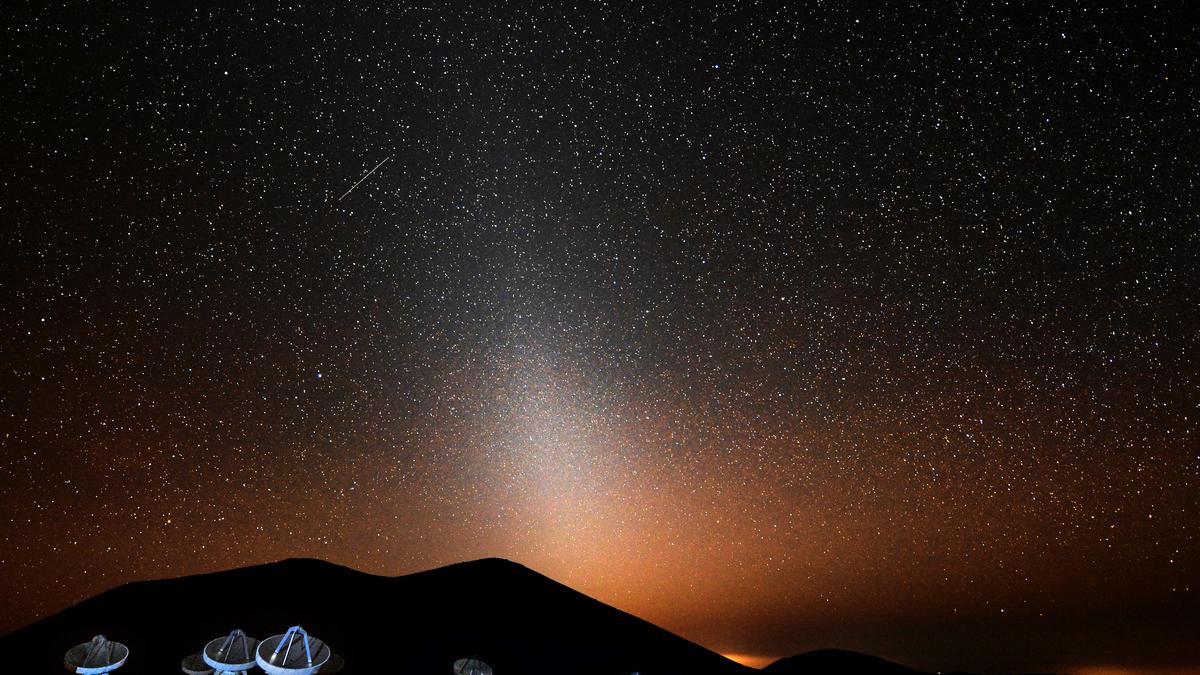
In zodiacal dust mystery, PRL Ahmedabad study points to a familiar source
The Hindu
Jayesh Jabari, a scientist at PRL Ahmedabad, has studied the NASA Juno spacecraft's solar panels, which suffered minor damage due to dust particles, and found that Mars's moons may be the source of the interplanetary dust that produces zodiacal light.
Say you send a spacecraft into the outer reaches of the Solar System on a scientific mission. But on its way, somewhere around Mars, fast-moving dust particles hit its body, including the solar panels, chipping off little pieces. Fortunately the spacecraft is robust and it continues its journey towards Jupiter relatively unfazed. But the solar panels have suffered important damage.
This is the fate that befell Juno, a spacecraft that NASA launched in 2011 to study the gas-giant Jupiter and its moons. Juno entered into a polar orbit around the planet on July 5, 2016. But before it did, according to data reported in a 2021 paper by a group of researchers from Denmark and the U.S., dust particles struck the solar panels attached to the Juno spacecraft.
A scientist at the Physical Research Laboratory, Ahmedabad, decided to make the best of Juno’s situation.
In a paper published in the Monthly Notices of the Royal Astronomical Society, Jayesh P. Pabari used the data in the 2021 paper to calculate the number of dust particles Juno might have encountered between 1 and 5 AU.
‘AU’ stands for ‘astronomical unit’, which is the distance between the earth and the Sun. Mars is at a distance of 1.52 AU and Jupiter at 5.2 AU from the Sun.
The 2021 paper reported a peak in the number of dust particles impacting Juno at 1.5 AU. Dr. Pabari used this data to calculate the flux of dust between 1 and 5 AU. (The flux is the number of dust particles flowing through a given area per second.) He found the flux at 1.5 AU to be 10-times higher than at other distances.
Scientists have known that this dust is the source of zodiacal light. Zodiacal light is sunlight scattered by interplanetary dust. From the earth, it is visible as a faint, diffuse glow on completely dark nights. Zodiacal light is present across the entire path of the ecliptic, which is the path along which the Sun moves in the sky over the course of a year.

President Donald Trump is now facing renewed scrutiny over his links to Epstein. During his campaign, Trump said he would have no problem releasing the Epstein files. But since returning to political life, he has dismissed them as fabrications, claiming they were pushed by his Democratic opponents. Let’s take a look at what Epstein files are and why it has once again become the center of political controversy in the United States.





















 Run 3 Space | Play Space Running Game
Run 3 Space | Play Space Running Game Traffic Jam 3D | Online Racing Game
Traffic Jam 3D | Online Racing Game Duck Hunt | Play Old Classic Game
Duck Hunt | Play Old Classic Game










